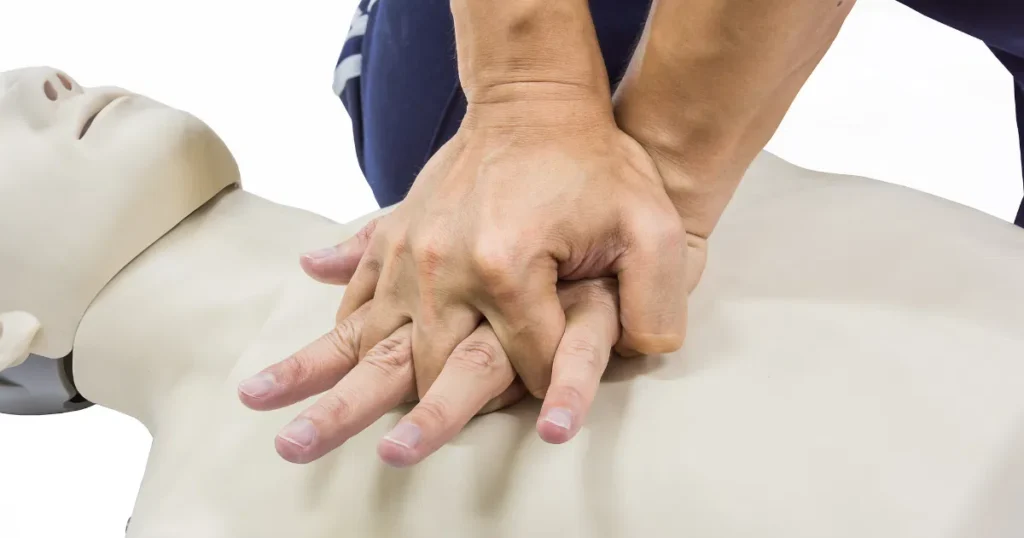Every second counts in an emergency. When it comes to saving lives, the first few moments are crucial. Cardiopulmonary resuscitation (CPR) is a lifesaving technique that everyone should know.
Effective CPR can greatly boost survival chances in cardiac arrest cases. But did you know that the way you place your hands during CPR can make all the difference?
In this blog post, we will explore the importance of proper hand placement in CPR.
Effective Chest Compressions
CPR involves giving chest compressions and rescue breaths to someone who is not breathing or whose heart has stopped. The goal of CPR is to keep oxygenated blood flowing to the vital organs until advanced medical help arrives.
One of the key components of effective CPR is proper hand placement for chest compressions. It ensures that chest compressions go to the right place and are strong enough to circulate blood.

Avoiding Injuries
Life-threatening emergencies can happen at any time and in any place. As a first responder, it is essential to know how to administer CPR correctly. While chest compressions are vital for saving a life, they can also cause serious injuries if not done correctly.
Improper hand placement during CPR can lead to broken ribs, punctured lungs, or damage to the internal organs. Use proper hand placement in CPR. It will reduce the risk of harm and still be effective.
Optimal Blood Flow
Proper hand placement in CPR not only helps avoid injuries but also ensures that blood is flowing effectively throughout the body. Place the hands on the lower half of the sternum, between the nipples. Press down with enough force to compress the chest by at least two inches.
Medical professionals recommend placing the hands in this location to pump blood from the heart to the rest of the body. By keeping your hands in the right position and applying enough pressure, you can help a cardiac arrest victim survive.
Enhances Efficiency and Effectiveness
Proper hand placement in CPR ensures optimal blood flow. It also makes the compressions more effective. Correct hand placement allows for smooth, uninterrupted compressions.
Having the right certification and training in CPR can also help improve the effectiveness of chest compressions. You can visit https://cprcertificationnow.com/products/bls-certification. They offer online certification courses that cover proper hand placement and other essential techniques for performing CPR.
Improved Outcomes
In a life-threatening situation, every second counts. Correct hand placement in CPR can greatly improve survival chances for cardiac arrest victims. Effective chest compressions keep oxygenated blood flowing to the brain and vital organs until advanced medical care are available.
Knowing how to administer proper CPR with correct hand placement can mean the difference between life and death. Perform chest compressions with proper hand placement. This gives the victim the best chance of survival.
Rescuer Fatigue Is Reduced
CPR can be physically demanding, especially if you are the only one performing it. Improper hand placement during chest compressions can lead to fatigue and exhaustion for the rescuer.
In a situation where every second counts, rescuer fatigue should not be a factor that hinders effective CPR. Proper hand placement reduces muscle strain on the rescuer. It allows them to provide uninterrupted compressions until help arrives.
Learning the Proper Hand Placement in CPR
Cardiac arrest can happen at any time and anywhere. Knowing how to perform proper hand placement in CPR can help save a life in an emergency. It is crucial to stay calm, follow the necessary steps, and practice proper hand placement techniques to ensure the best outcomes in a life-threatening situation.
Need more ideas? Check out other helpful articles on our website.

